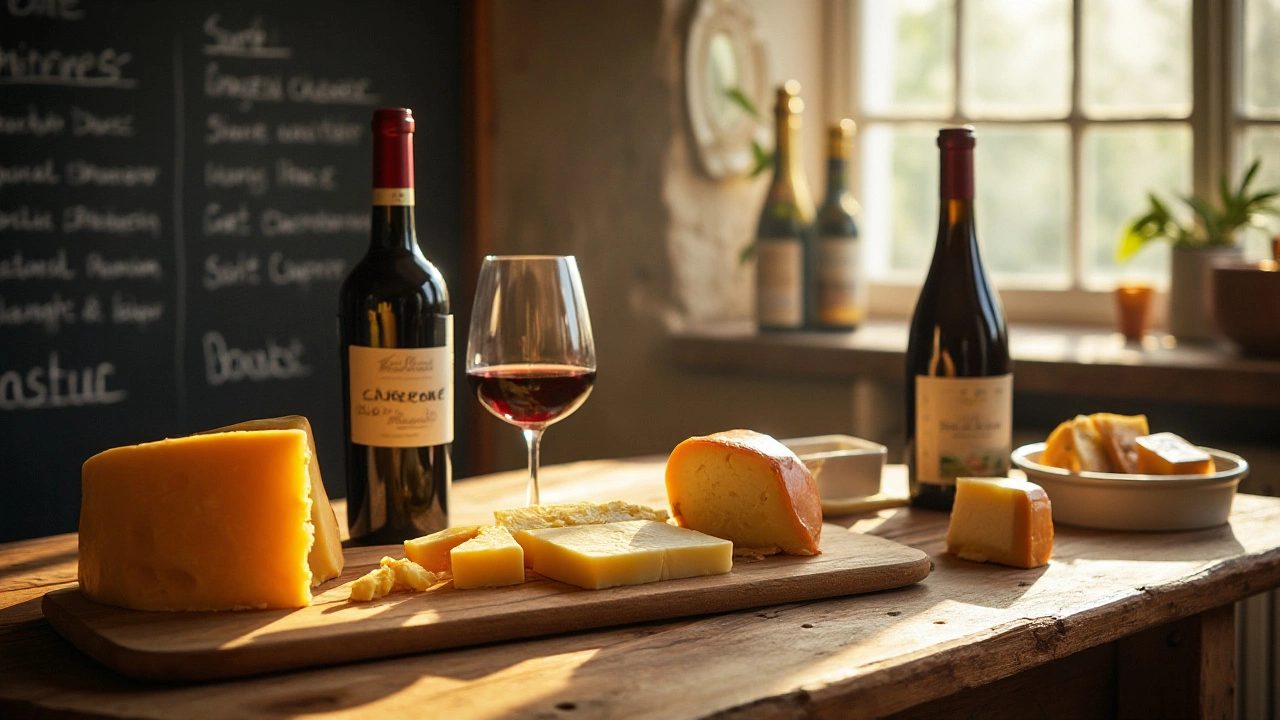Best Cheese for Red Wine: Simple Pairing Rules
If you love red wine, you’ve probably wondered what cheese makes it shine. The right cheese can bring out fruit, soften tannins, and add a creamy finish. Below are the easy‑going pairings that work for most reds, plus a quick guide to building a balanced cheese board.
Match Flavor Intensity
Red wines range from light‑bodied Pinot Noir to big, bold Cabernet. A good rule of thumb is to pair the cheese’s strength with the wine’s intensity. Light reds love milder cheeses, while robust reds need richer, stronger flavors.
Light reds (Pinot Noir, Gamay): Go for soft to semi‑soft cheeses like Brie, Camembert, or young Gouda. Their buttery texture mirrors the wine’s fruit notes without overwhelming the palate.
Medium reds (Merlot, Chianti): Choose cheeses with a bit more bite—think aged Cheddar, Manchego, or Gruyère. The nutty, slightly salty edge helps balance the wine’s moderate tannins.
Full‑bodied reds (Cabernet Sauvignon, Syrah): Pair with bold, hard cheeses such as aged Parmigiano‑Reggiano, Pecorino Romano, or blue cheese. The salty, umami punch cuts through the wine’s firm structure and brings out dark fruit flavors.
Texture Matters Too
Texture is often overlooked, but it can make or break a pairing. Soft cheeses melt on the tongue, softening tannins, while hard cheeses provide a satisfying crunch that contrasts with a wine’s smooth body.
Try mixing textures on a single board: a creamy Brie, a crumbly goat cheese, and a firm aged cheddar. This variety keeps each bite interesting and lets you experiment with how each cheese affects the wine.
Regional Pairings Are a Safe Bet
Pairing wines with cheeses from the same region is a timeless shortcut. A French Bordeaux loves a French Roquefort, while an Italian Chianti shines with Tuscan Pecorino. The shared terroir means the flavors already speak the same language.
When you can’t find the exact regional cheese, look for similar milk types and aging processes. For example, a Spanish Tempranillo pairs nicely with a Spanish Manchego, but a French Merlot will also enjoy a well‑aged Gouda.
Quick Board Building Tips
1. **Pick three cheeses** – one soft, one semi‑soft, one hard. This covers a range of textures and flavors.
2. **Add a neutral carb** – crackers, baguette slices, or plain bread let the cheese and wine do the talking.
3. **Include a fruit or nut** – grapes, figs, or toasted almonds add a sweet or crunchy contrast that highlights the wine’s fruit notes.
4. **Consider a spread** – a drizzle of honey on blue cheese or a smear of chutney on cheddar can elevate the pairing without hiding the basics.
Common Mistakes to Avoid
Don’t pair a highly acidic wine with an overly sharp cheese; they’ll clash and make the palate feel sour. Also, avoid heavily smoked cheeses with delicate reds – the smoke will mask the wine’s subtle fruit.
Finally, keep the cheese at room temperature. Cold cheese dulls flavor, making it harder to notice how it interacts with the wine.
With these simple guidelines, you can build a cheese board that makes any red wine taste its best. Grab a bottle, select a few cheeses, and enjoy the perfect match in minutes.
Discover the art of pairing cheese with red wine in a delightful journey of taste and aroma. This guide will walk you through the characteristics of both soft and hard cheeses that complement various red wines. Learn about the history and science behind these pairings, as well as tips for creating the perfect charcuterie board. Enhance your next gathering with expert advice on balancing flavors and intensities between cheeses and your favorite red wines.
View Details

